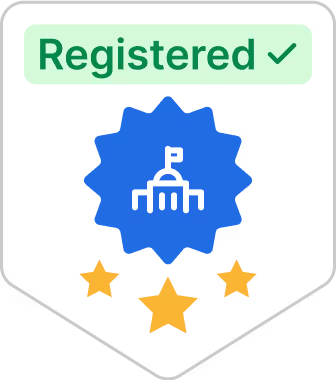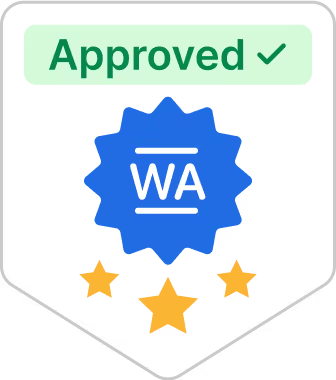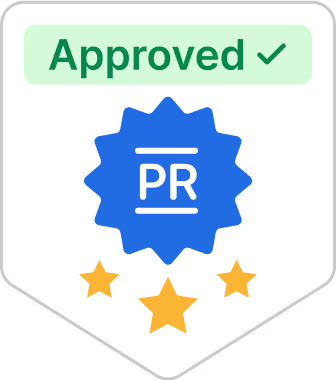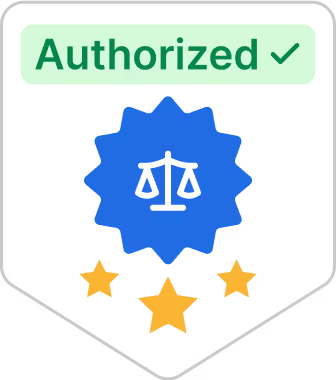What Is a partnership business?

You and your best friend are finally ready to take the next step and turn your t-shirt printing side hustle into a small business. You have the knowledge, materials, and ideas, but you need to decide which business structure is right for you. You’ve probably wondered what is a partnership business?
A partnership is a simple business structure that outlines a formal agreement between two or more people to do business together.
A partnership has advantages but may not be the best path for everyone. This guide breaks down the pros and cons of building a partnership and how to get started if it is indeed the best choice for you.
Partnership pros and cons
There are benefits and drawbacks to setting up a new business as a partnership. You may have a couple of questions, like what is the difference between LLC vs Partnership or limited partnership vs limited liability partnership. Some of these pros and cons depend on the kind of partnership you choose. Let’s define partnership business structures:
- General partnership – In a general partnership, all partners share equal profits and liabilities. All general partners have unlimited liability, and any general partner can be sued for the partnership’s debts.
- Limited partnership (LP) – A limited partnership has one person with unlimited liability while all of the others have limited liability. This means one partner is responsible for the consequences (financial and otherwise) of the business’s actions. The others who hold limited liability are limited to liability for the amount they’ve invested in the company.
- Limited liability partnership (LLP) – Thus, a limited liability partnership means all limited partners in the business have limited liability. This protects all those involved from the partnership’s debts.
Partnership pros
All partnership agreements and structures offer benefits to the partners involved, such as:
- Ease of set-up
- Lack of formal incorporation process through the federal government
- Fewer rules and regulations than LLCs and corporations
- Lower taxes as the partnership doesn’t pay taxes, only the individual partners
These make a partnership a good choice for those just starting out on a new business venture, especially if you’re not sure the idea is viable.
Partnership cons
There are also drawbacks to starting your business as a partnership. These include:
- Personal liability for business debts
- Liability for claims against the business
- Potential loss of personal assets
You should think carefully about what you’re willing to risk to set up your small business if you’re considering a partnership. While it’s simple to start and allows you to test the viability of your business idea, you do risk losing personal assets if something goes wrong.
How to create a partnership
Partnerships are relatively simple to start. In just four steps, you can open your online shop:
Step 1: Choose the structure
The first thing you must do is decide which partnership structure works best for your business. A general partnership equally distributes liability, while an LP puts more power (and liability) in one person’s hands. An LLP limits all partners’ liability to a certain extent.
Step 2: Draft your agreement
This is the most important step. Your partnership agreement outlines how you’ll:
- Run your business
- Share profits and losses
- Manage changes to leadership
You must have all partners sign the agreement to avoid any confusion. Further information you should specify in the partnership agreement includes policies for:
- Ownership shares
- Dispute resolution
- General Partner expulsion if needed
While you probably don’t want to believe you’ll have future problems with any partners, it’s important to protect yourself in case something does happen.
Step 3: Give your business a name
Before you turn in your official paperwork, your partnership needs a name. There are a few guidelines for partnership names, such as:
- Some states require the designation of LP or LLP be included in the name
- Partner names may or may not be allowable in the name, depending on the state
- Your business name cannot already be in use by another company
A quick online search should help you find the rules for your specific state.
Step 4: Register your partnership
Lastly, you must make it official. Register the partnership with your state by completing an application. Your business must also acquire an employer identification number (EIN). You should check your state’s specific rules and processes for submitting partnership paperwork as they can vary.
Is a partnership right for you?
You may be wondering how partnerships are taxed or, now that you know what is a general partnership in business, you must decide if it’s the right choice for you. The three main factors to consider include:
- How you want to pay taxes: individually or as a business
- The level of liability you’re willing to assume
- The type of business you’re starting
Partnerships are often used for companies that offer professional services in which partners accept the personal liability risk.
To avoid having to set up a partnership in person, simply fill out this EIN form to apply for a partnership online right now.
Sources:
- IRS.gov. Tax Information for Partnerships. https://www.irs.gov/businesses/partnerships
- U.S. Small Business Administration. Choose a Business Structure. https://www.sba.gov/business-guide/launch-your-business/choose-business-structure
- U.S. Small Business Administration. Choosing the Right Business Structure: Three Factors to Consider. https://www.sba.gov/blog/choosing-right-business-structure-three-factors-consider























